Reduction, almost ironically, can create more with less.
That’s why design has the phrase “less is more” because adding detail or complexity can very often detract from the whole. More can create visual confusion and often muddy the user experience with less than crucial features.
In engineering, more components equals more potential failure points and increased cost and difficulty to manufacture and assemble. In a variety of fields, adding more of anything usually has to be justified with a larger benefit-to-cost ratio.
So the act of reduction, simplification, or plainly limiting complexity from the beginning is a crucial step in creating something great. Often the best versions of some product or design were not the very first, but instead a later iteration that had been pared back to the absolute essential for the best user experience.
Take the television remote control, a perfect example of the life cycle of complexity.
Early television remotes were simple, extremely so. The first ones usually had two buttons (power and channel), which grew to four a few years later when volume was added and channels were split into channel up and channel down. From there growth seemed almost exponential with numbers and special functions being added, until around the turn of the twenty-first century we found ourselves at the height of superfluous complexity with multiple remotes all featuring upwards of 50 buttons each.
That could mean hundreds of buttons staring at you, while all you want to do is turn the television on to watch “Mythbusters.”
But soon the movement of pairing back began with the introduction of the Apple remote in 2005, complete with only six buttons (that looked like three). In the golden days of Apple design (which may already be behind us), the company made things as simple and user friendly as possible. Apple reduced the number of interfaces in its products, even though features continued to increase.
That is why the new remote was simple, and that simplicity continued through every iteration of it, inspiring others like the recent Amazon Firestick that features 12 buttons (that only look like eight) and voice activation features. Finally, it had been realized that simplicity actually made things easier, cheaper, and provided a better experience for anyone turning on the darn TV.
The same goes for many products: simple things get complex and then are reduced back to the essentials; it’s the circle of life, really. So when Armin Strom released the Mirrored Force Resonance, the most complicated Armin Strom to date, it was only a matter of time before this brand was certain to begin efforts at reducing complexity while keeping the essential.
For 2018, Armin Strom continues of its philosophy of engineering the essential with the appropriately named Pure Resonance.
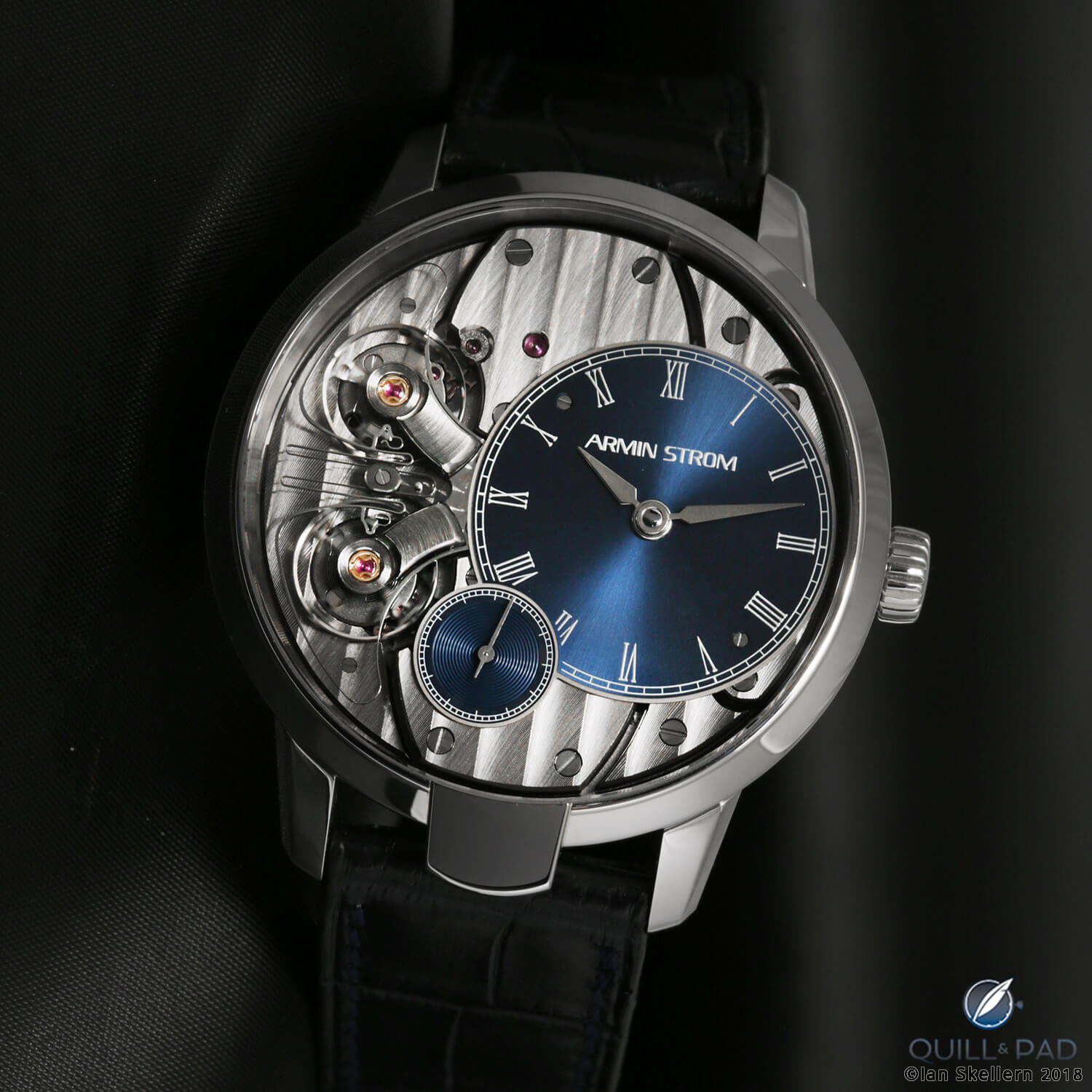
Armin Strom Pure Resonance
Clear precedent for simplicity
Armin Strom has a history of keeping things simple by focusing on high-quality horology with a unique style and attention to simple details. Minimalism is a guiding principle alongside keeping the mechanics a main visible feature.
So while they might not be as sterile as some ultra-modern watches, Armin Strom’s timepieces are intended to be clean and straightforward. Minimizing features to let the horology stand out is really where the Armin Strom ethos lies.
The Mirrored Force Resonance focuses on this as well, but a few features might be considered excessive if one were to want to create a pared-down version puting the focus on resonance.
While the individual components and design details were definitely kept simple on the Mirrored Force Resonance, the addition of an extra subdial and a zero reset mechanism for the seconds added to the visual and mechanical complexity. It was determined that a cleaner, purer version could be achieved.
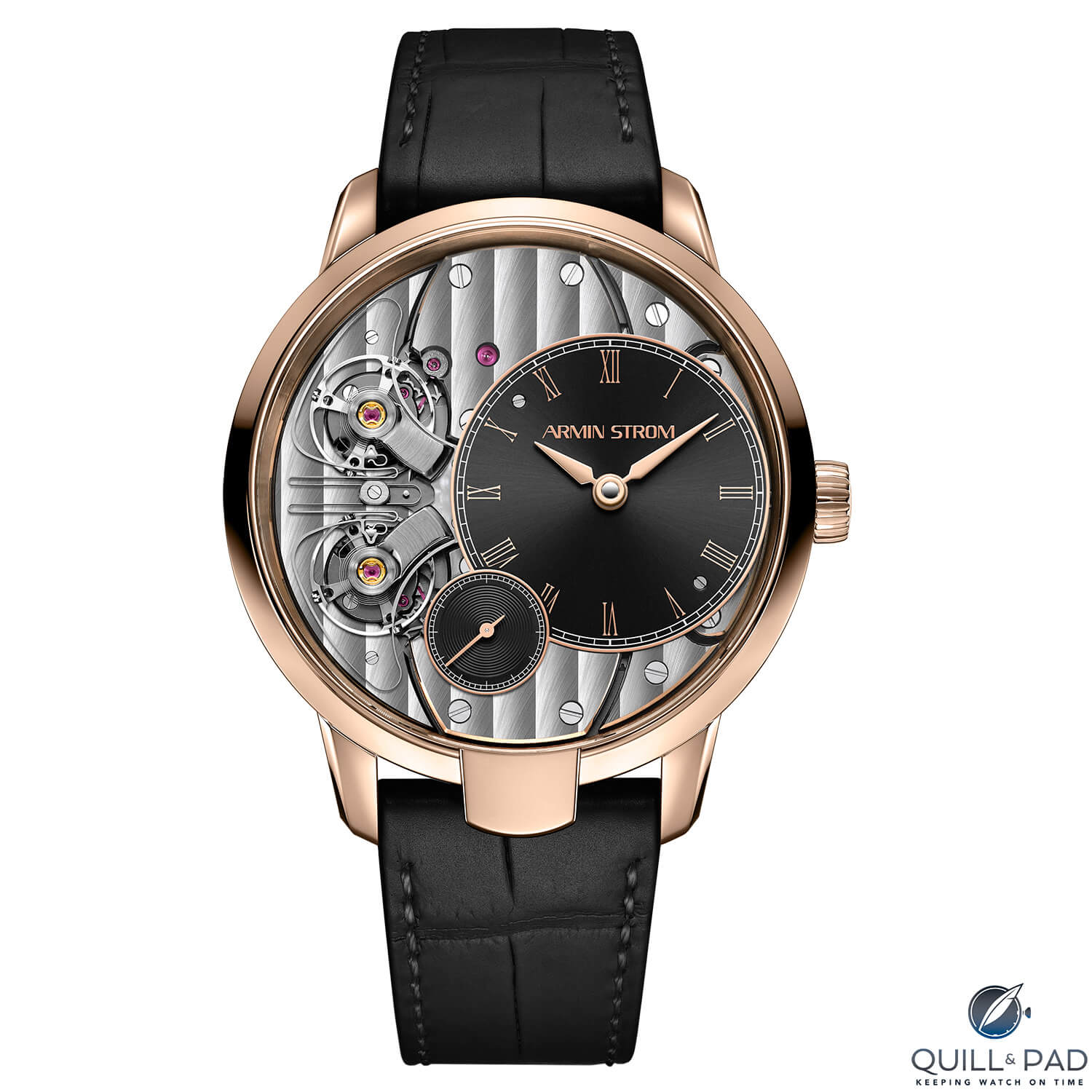
Armin Strom Pure Resonance in pink gold
First task was to remove the zero reset mechanism. This added case and gear train complexity, not to mention increased wear and the possibility of introducing isochronism errors through interaction with the gear train. With this mechanism gone, the dial side of the movement became much less cluttered, thereby also increasing readability.
Next, the secondary running seconds dial was removed, freeing up energy for the operation of the resonance oscillator and simplifying the dial even further. Since this dial ran in reverse and was largely incorporated for a visual check of the resonance, its loss doesn’t change the watch’s function and resonance capabilities. And since energy from the gear train isn’t being used to drive a display of seconds, the resonance effect should be more consistent since there are less possible ways to disrupt the energy transfer creating the resonance effect in the first place.
ARMIN STROM watchmaker Claude Greisler explaining the new Resonance Pure.
Posted by Quill & Pad on Monday, 15 January 2018
Wearability and usability
These changes, while good for chronometric performance, also alter the visual effect of the watch on the wearer. The simplified dial, readable at a quick glance as a simple three-handed watch with off-center display, is clean and classic featuring a railroad track minute ring and Roman numerals on a simple brushed surface.
The seconds subdial contains a similar railroad track with no numerals or sectors and simple circular engraving, simplifying the visual texture. Combined with plates featuring applied straight côtes de Genève (a first for the brand), the Pure Resonance feels like a watch that could have been made a century ago.
Compared to past Armin Strom pieces, this is the first watch that truly feels anachronistic for the brand, but in a good way. Armin Strom has taken a technically complex creation and brought it back to a familiar place for most horology lovers. This simplification could actually draw more people into the the brand’s fold since its watches have largely been contemporary and technical in appearance.
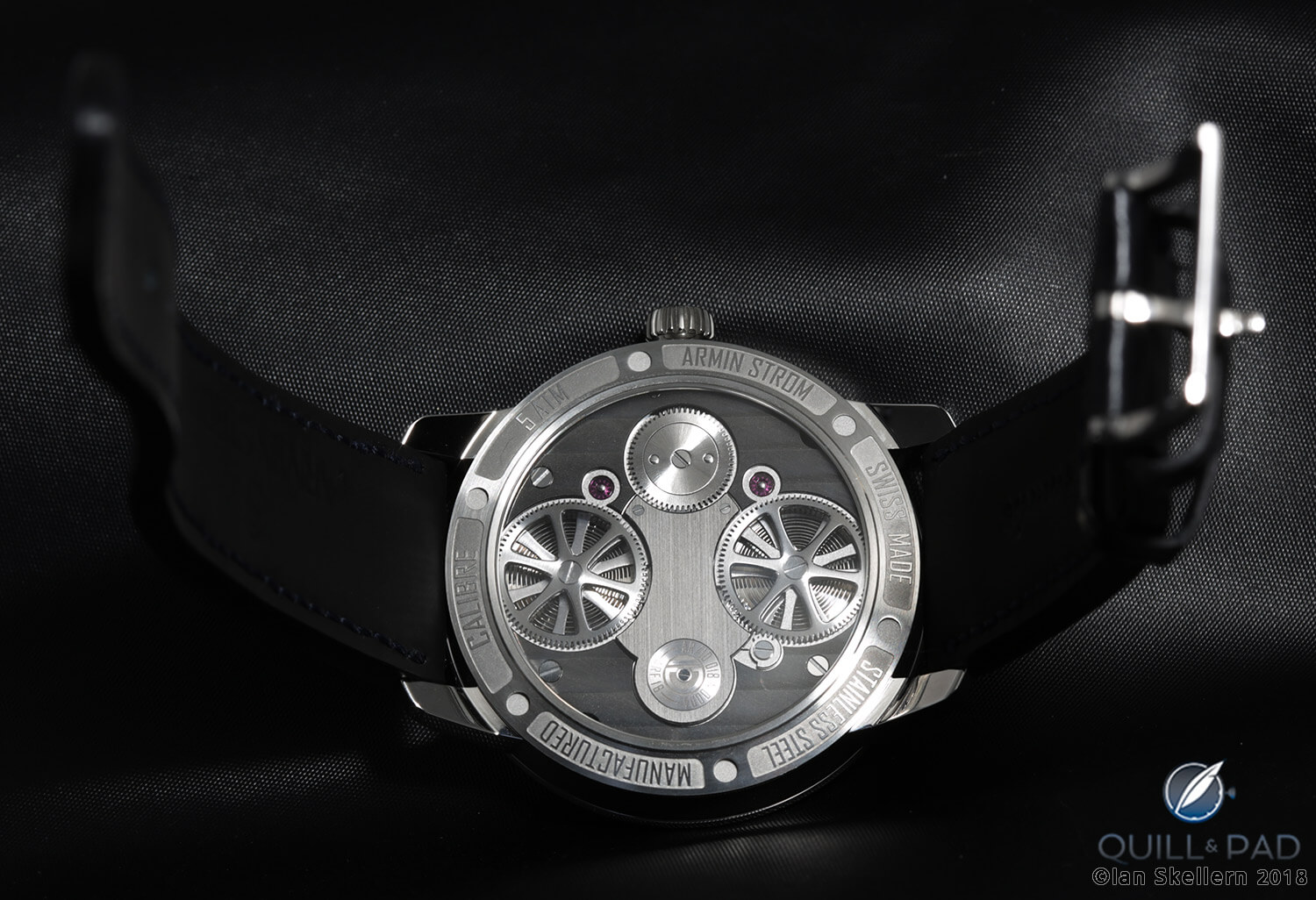
View of the back of the Armin Strom Pure Resonance
The movement as seen from the rear is largely the same as the Mirrored Force Resonance, with only a different cutout for the spring barrels and a slightly different middle plate with no cutouts. This continues the simplified intent, and with more straight côtes de Genève keeps both sides stylistically related.
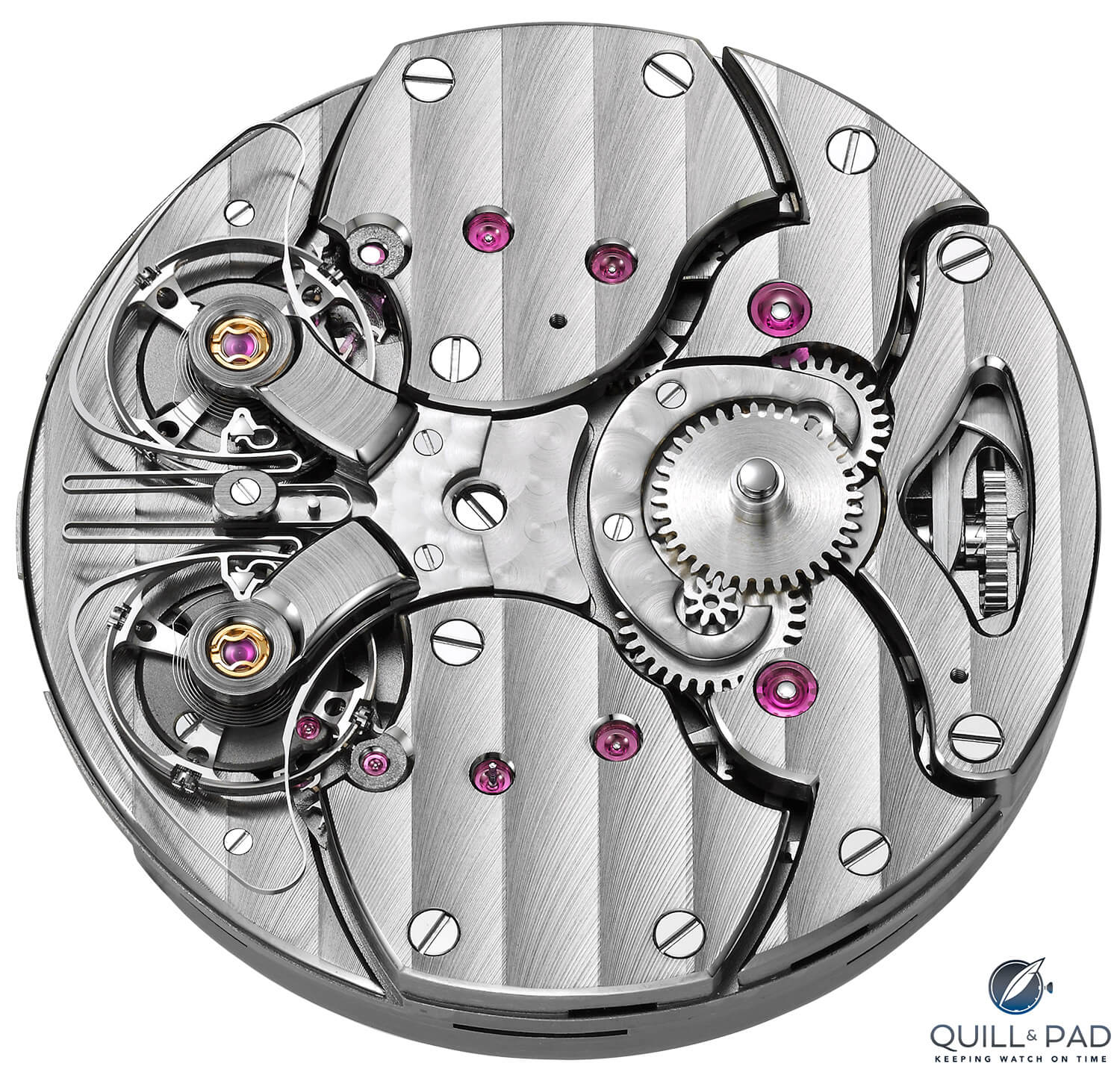
Armin Strom Caliber ARF16 dial side
All of these small changes and simplifications make the Pure Resonance a much more wearable watch for most collectors, along with the reduction in overall case size by one millimeter in thickness and one and a half millimeters in diameter to 42 mm. This brings the style to a more subdued level, something popular opinion says is favored.
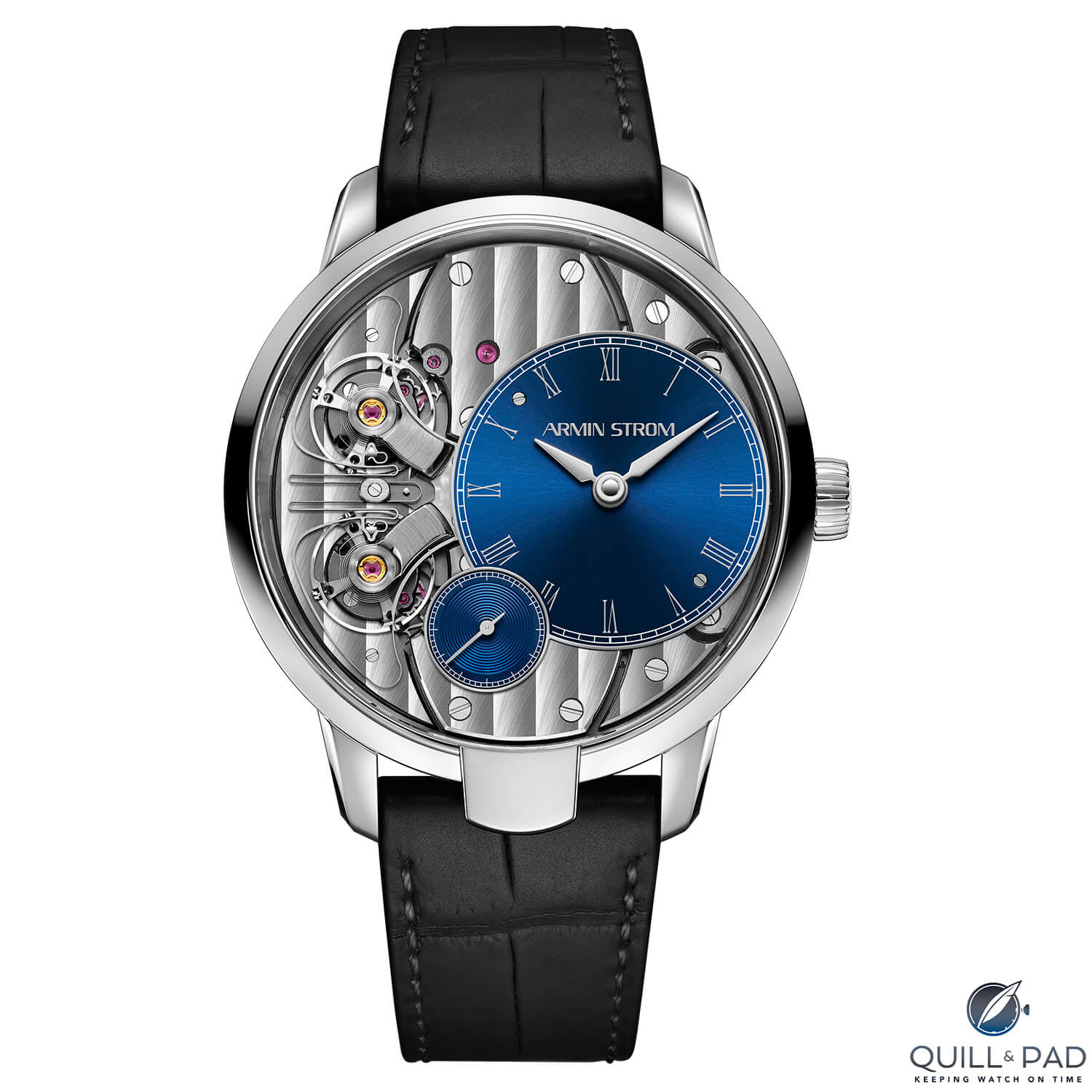
Armin Strom Pure Resonance Water in stainless steel
But function is truly the primary focus of the Pure Resonance, and with a straightforward resonance mechanism unencumbered by a second reverse running seconds display and the complex zero-reset mechanism, the Pure Resonance is a streamlined mechanical creation. Its function is more focused and refined in its complexity, something that any engineer or designer would be proud of. I like complexity and ingenious mechanisms, but with the Pure Resonance, Armin Strom wanted to show that less really can be more.
As I guess how this can be applied in even more instances, why don’t we hit that breakdown!
- Wowza Factor * 9.76 Any watch with a pair of oscillators designed for resonance is a huge wow!
- Late Night Lust Appeal * 112 » 1,098.345m/s2 As one of three possible resonance wristwatches, it is hard to say just how much lust this watch creates!
- M.G.R. * 68.9 Okay, seriously, a resonance watch! Do I need to say anything more?
- Added-Functionitis * N/A The coolest pieces are usually time only, that is no surprise! So there is no need for Gotta-HAVE-That cream even though this watch resonates with me!
- Ouch Outline * 11.4 Getting a one-centimeter shard of wood jammed deep in your palm! Slivers are terrible enough, but when it is big enough to be considered a shard of wood, you know it hurts! And even though it took a decent-sized pair of pliers to extract, I just might be willing to endure it again if it meant getting this incredible machine strapped to my wrist!
- Mermaid Moment * However long it takes to resonate! That pretty much is the point of this watch, so by that time you would nearly be ready to book a caterer!
- Awesome Total * 838 Multiply the water resistance in meters (50) by the caliber number (ARF16) and add the number of jewels in the caliber (38) for a resonant awesome total!
For more information, please visit www.arminstrom.com.
Quick Facts Armin Strom Pure Resonance Water & Fire Editions
Case: 42 x 12 mm, steel or pink gold
Movement: manual winding Caliber ARF16 with visible resonance clutch spring, two independent, symmetrically mirrored regulators beating at 25,200 vph / 3.5 Hz frequency
Functions: hours, minutes, seconds
Price: 49,000 Swiss francs in steel (Water), 62,000 Swiss francs in pink gold (Fire)
Trackbacks & Pingbacks
-
[…] I’d also like to highlight the Armin Strom Pure Resonance as the more minimalistic dial of this model is both more to my taste than the original Resonance and technically it should deliver better chronometric performance, which is really the whole point of resonance in the first place (see Armin Strom Pure Resonance: Less Really Is More And That Resonates). […]
Leave a Reply
Want to join the discussion?Feel free to contribute!





















































Well, the only trouble (to my eyes) is that the first version looked a heck of a lot better!